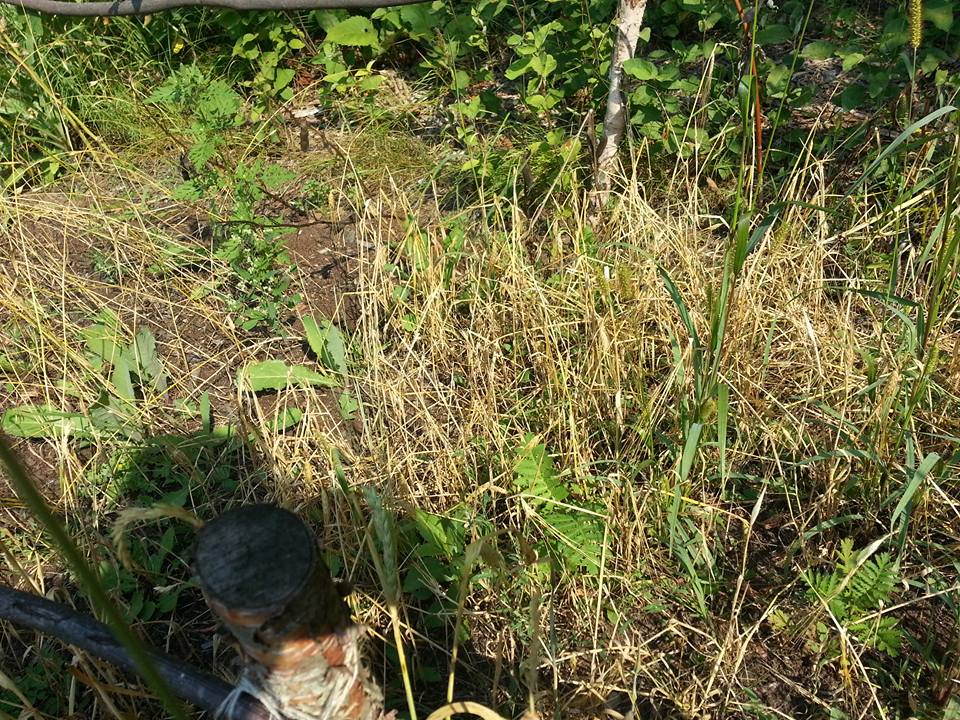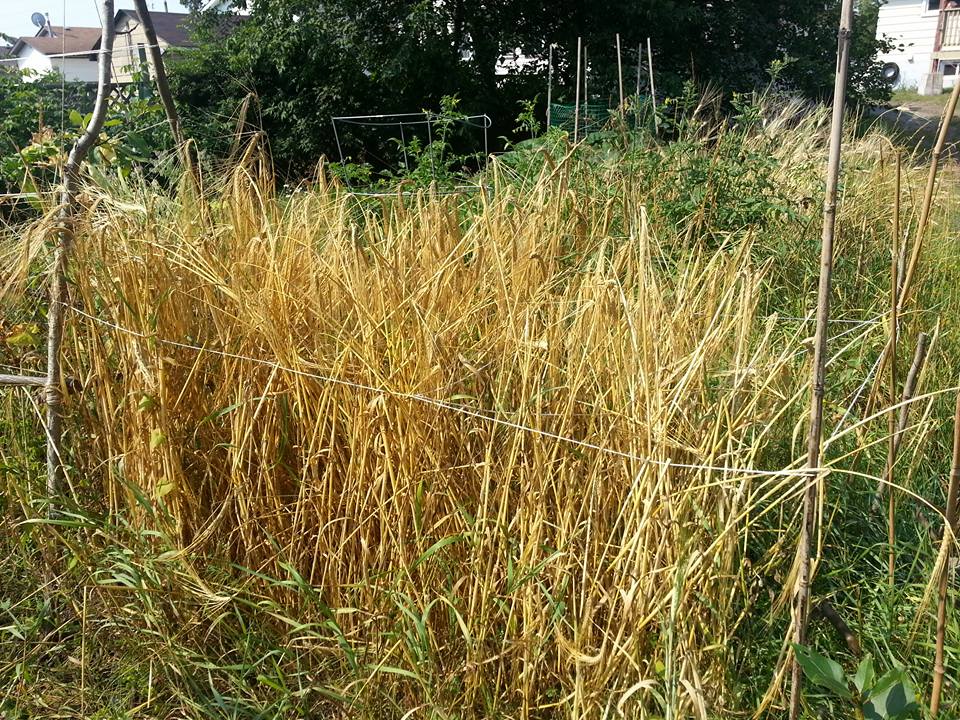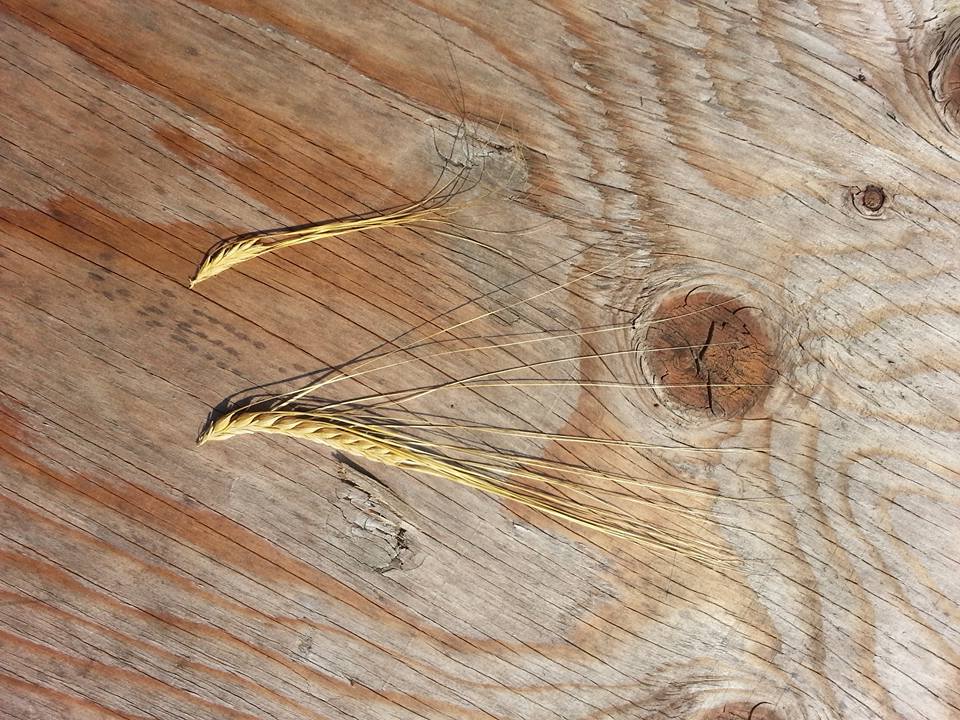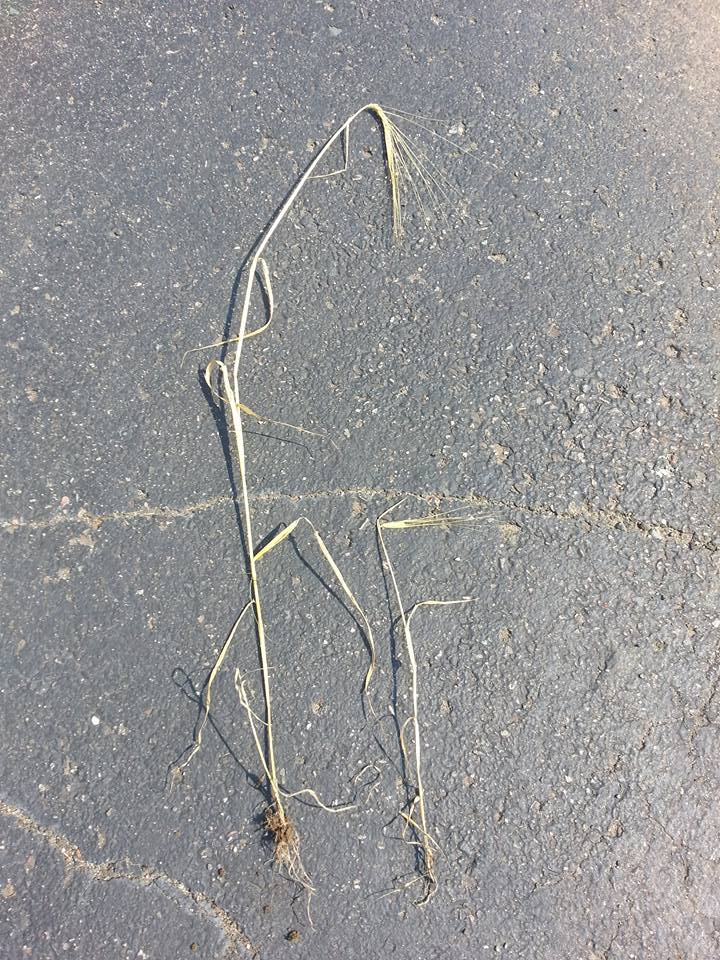Well, I'm learning a lesson in the importance of seed spacing and why a seed drill is such a great innovation (at least for me who can't broadcast seed to save myself).
My Chevalier is in its second season. Last year I used very old seed from the gene bank and it was pretty weak and lethargic. I've grown to expect this from very old seed, and so this year I was looking forward to seeing how this variety really grows. I went to the effort (as I described here) to space the seed into a seed tape matrix using a correct spacing as advised by the various Ag departments in North America.
I planted it a week later than the other barley, but it's still been exposed to two dumps of snow, and numerous frosts. Right now, the plants are at least 3 times bigger than any of my other barley, and couldn't be more healthy.
On the other hand, the Hana and Golden promise is looking a bit sickly. They are planted in new beds, in different parts of the garden, with composted manure applied to them. They're both looking like they are suffering from Nitrogen deficiency, which might be a lack of Nitrogen, or a lack of their ability to uptake the Nitrogen due to the amount of rain we've had this spring. Yes, it's been cool and wet here. My spinach is growing great, and it usually just bolts and I was about to give up growing it at this end of the season. That's a good indicator of wet conditions and even temperatures.
Looking at my Hana and golden promise, it's obvious that I broadcasted way too densely and unevenly, which is probably making the matter worse. will they survive my ham fisted effort? Probably. I might lose some yield, but I'm learning some important lessons.
I've been learning more about how soil biology interacts with plants and I think I now have a good handle on why my barley is turning yellow. Too much water displaces air in the soil. This causes the biology in the soil that converts nitrogen to a plant available form to die, and anaerobic organisms to take their place. These produce toxic by-products which can make the matter worse. The situation will slowly remedy itself as the moisture content in the soil drops provided the soil is healthy. Since these are new beds I would say that the soil is probably not in optimum condition, and so I think I'll give it a big dose of soil organisms shortly.
If anyone is interested in this sort of thing, here is a video by one of the worlds leading experts in soil biology:
[ame]https://www.youtube.com/watch?v=GEtl09VZiSU[/ame]
Oh, I forgot to mention that I ran out of space in my garden to plant the later maturing Hana and Golden Promise. So last week I went and did a bit of "
gorilla gardening" and planted it at a site that was recently excavated as part of a road upgrading project in my neighbourhood. The workers planted rye as an erosion control, and I also planted some hard red wheat as a deer diversion, and my Khorasan durum to keep them all company. So I have something like an artificial landrace going on

























































![Craft A Brew - Safale BE-256 Yeast - Fermentis - Belgian Ale Dry Yeast - For Belgian & Strong Ales - Ingredients for Home Brewing - Beer Making Supplies - [3 Pack]](https://m.media-amazon.com/images/I/51bcKEwQmWL._SL500_.jpg)














